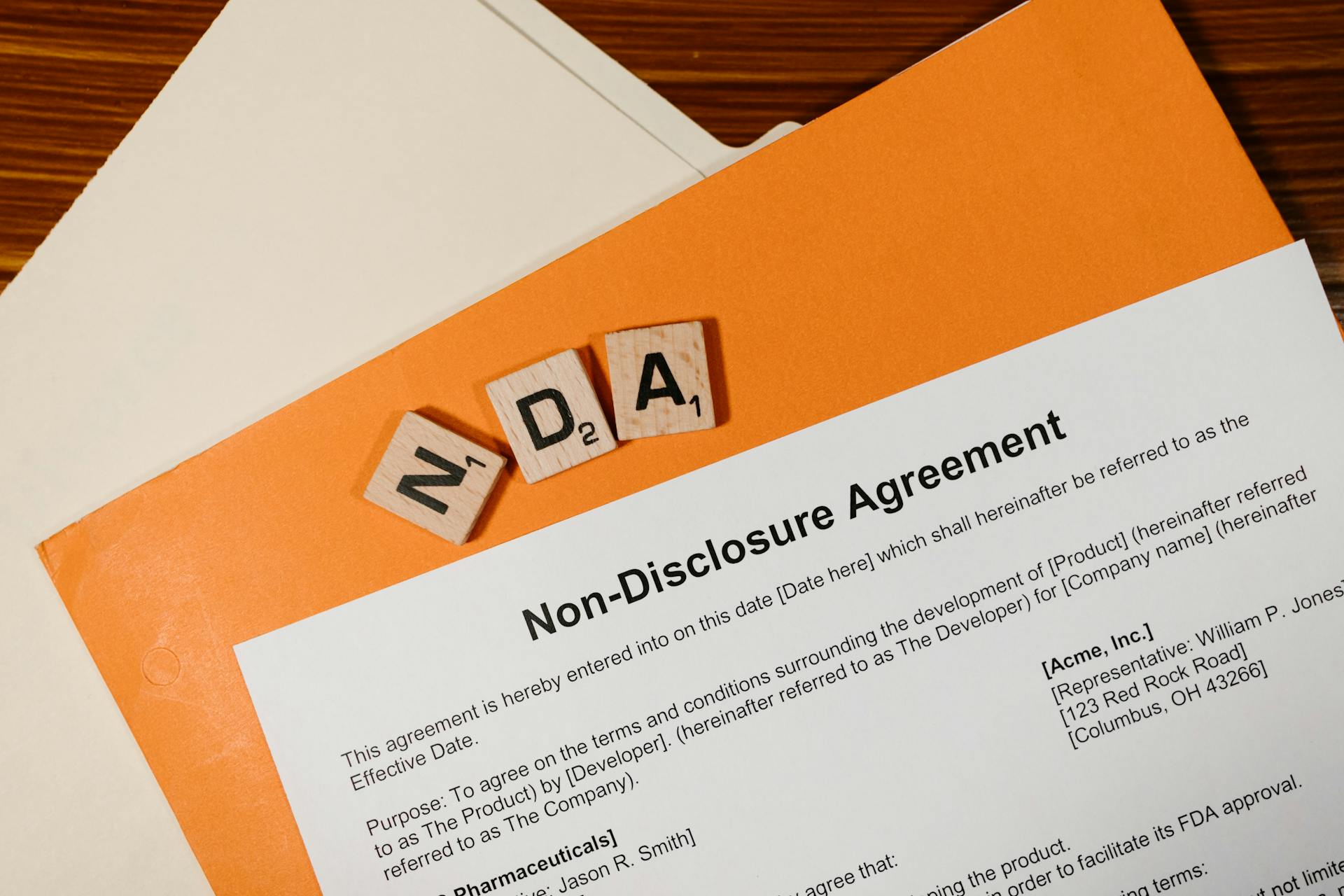
The HIPAA Security Rule is a crucial part of protecting sensitive patient data. The rule requires covered entities to implement administrative, technical, and physical safeguards to ensure the confidentiality, integrity, and availability of electronic protected health information (ePHI).
To meet these requirements, covered entities must conduct a risk analysis to identify potential security risks and implement measures to mitigate them. This includes implementing access controls to limit who has access to ePHI and ensuring that all employees understand their role in protecting patient data.
Implementing a risk management plan is essential to address security risks and vulnerabilities. This plan should include procedures for responding to security incidents and ensuring business continuity in the event of a disaster.
The HIPAA Security Rule also requires covered entities to implement technical safeguards, such as firewalls and encryption, to protect ePHI from unauthorized access.
Take a look at this: Data Security Issues That Must Be Addressed by Hipaa
Administrative Requirements
Administrative safeguards are policies and procedures that set out what the covered entity does to protect its electronic protected health information (ePHI). These requirements cover training and procedures for employees of the entity, whether or not they have direct access to ePHI.
The HIPAA Security Rule requires covered entities to perform a risk analysis, which includes evaluating the likelihood and impact of potential risks to ePHI, implementing appropriate security measures to address the risks identified, documenting the chosen security measures, and maintaining continuous, reasonable, and appropriate security protections.
A risk analysis process should be an ongoing process, and covered entities must identify and protect against reasonably anticipated threats to the security or integrity of the information. They must also protect against impermissible uses or disclosures of ePHI that are reasonably anticipated.
Here are some key administrative requirements:
- Security management: policies and procedures to prevent, detect, contain, and correct security violations
- Workforce security: ensure all workforce members have appropriate access to ePHI and prevent unauthorized workforce members from obtaining access to ePHI
- Information access management: authorize access to ePHI only when such access is appropriate based on the user or recipient’s role (role-based access)
- Security awareness and training: implement training for all workforce members that addresses periodic security updates, procedures for malware detection and reporting, procedures for monitoring logins, and procedures for creating, changing, and safeguarding passwords
- Security incident procedures: identify and respond to suspected or known security incidents, mitigate harmful effects, and document security incidents and their outcomes
What Is PHI?
Protected health information, or PHI, is any piece of information in an individual's medical record that can be used to uniquely identify the patient. This includes a wide range of personal details.
The Department of Health and Human Services' Office for Civil Rights has identified 18 types of information that qualify as PHI, including name, address, dates of birth and admission, and social security number.
Discover more: What Is Phi in Hipaa
Here are the 18 types of information that qualify as PHI:
- Name
- Address
- Any dates (except years) that are directly related to an individual, including birthday, date of admission or discharge, date of death, or the exact age of individuals older than 89
- Telephone number
- Fax number
- Email address
- Social Security number
- Medical record number
- Health plan beneficiary number
- Account number
- Certificate/license number
- Vehicle identifiers, serial numbers, or license plate numbers
- Device identifiers or serial numbers
- Web URLs
- IP address
- Biometric identifiers such as fingerprints or voice prints
- Full-face photos
- Any other unique identifying numbers, characteristics, or codes
PHI can be found in electronic form, which is known as electronic protected health information, or ePHI.
Administrative
Administrative requirements are a crucial part of HIPAA compliance, and they involve policies and procedures that set out what a covered entity does to protect its PHI. This includes ensuring all workforce members have appropriate access to ePHI and preventing unauthorized workforce members from obtaining access to ePHI.
Administrative safeguards are defined as "Administrative actions, and policies and procedures, to manage the selection, development, implementation, and maintenance of security measures to protect electronic protected health information and to manage the conduct of the covered entity's workforce in relation to the protection of that information." (45 C.F.R. § 164.304).
A key aspect of administrative safeguards is the implementation of a security management process, which involves identifying and analyzing potential risks to ePHI and implementing measures that reduce risks and vulnerabilities to a reasonable level.
To implement a security management process, covered entities must perform a risk analysis, which includes evaluating the likelihood and impact of potential risks to ePHI, implementing appropriate security measures to address the risks identified in the risk analysis, and documenting the chosen security measures and the rationale for adopting those measures.
The Security Rule administrative safeguard provisions require covered entities and business associates to perform a risk analysis, which should be an ongoing process.
Here are some key administrative safeguard requirements:
- Security management process: Identify and analyze potential risks to ePHI and implement measures that reduce risks and vulnerabilities to a reasonable level.
- Information access management: Implement policies and procedures to enforce strict role-based access to ePHI, consistent with the Privacy Rule’s “Minimum Necessary Rule” for use or disclosure.
- Security awareness and training: Implement training for all workforce members that addresses periodic security updates, procedures for malware detection and reporting, procedures for monitoring logins, and procedures for creating, changing and safeguarding passwords.
Remember, administrative safeguards are not just about implementing policies and procedures, but also about ensuring that workforce members are trained and aware of their roles in protecting ePHI.
Physical Security
Physical Security is a crucial aspect of the HIPAA Security Rule. It involves protecting electronic Protected Health Information (ePHI) and the computer systems in which it resides from unauthorized access.
To achieve this, covered entities must limit physical access to ePHI systems and the facilities in which they are housed. This includes implementing Facility Access Controls to restrict access to authorized personnel only.
Suggestion: Physical Gold Investment
Facility Access Controls should be designed to prevent unauthorized individuals from entering the facilities where ePHI is stored. This can be achieved by using secure doors, locks, and surveillance systems.
Covered entities must also specify the proper use of and access to workstations and electronic media. This includes policies and procedures for disposal of ePHI and the hardware or electronic media on which it is stored.
Proper disposal of ePHI is essential to prevent unauthorized access. This includes procedures for removing ePHI from electronic media before it is made available for re-use.
Here are some key requirements for Physical Security:
- Facility Access Controls: limit physical access to ePHI systems and facilities
- Workstation Use and Security: specify proper use of workstations and electronic media
- Policies and procedures for disposal of ePHI and electronic media
- Procedures for removing ePHI from electronic media before re-use
Technical Compliance
Technical compliance is a critical aspect of the HIPAA Security Rule. It involves implementing technical safeguards to protect electronic protected health information (ePHI) and control access to it.
The HIPAA Security Rule requires covered entities to implement technical safeguards, which encompass technology, policies, and procedures for its use (45 CFR §164.312). This includes measures to ensure the confidentiality, integrity, and availability of ePHI.
To achieve this, covered entities must implement access control, which allows only authorized persons to access ePHI. This can be achieved through technical policies and procedures (45 CFR § 164.312).
Audit controls are also essential, as they record and examine access and other activity in information systems that contain or use ePHI (45 CFR § 164.312). This helps identify potential security threats and ensures compliance with the HIPAA Security Rule.
Integrity controls are another critical aspect of technical compliance, as they ensure that ePHI is not improperly altered or destroyed (45 CFR § 164.312). This can be achieved through policies, procedures, and electronic measures.
Transmission security is also a key aspect of technical compliance, as it guards against unauthorized access to ePHI being transmitted over an electronic network (45 CFR § 164.312).
Here is a summary of the technical safeguards required by the HIPAA Security Rule:
By implementing these technical safeguards, covered entities can ensure the confidentiality, integrity, and availability of ePHI and comply with the HIPAA Security Rule.
Compliance Best Practices
To ensure HIPAA compliance, covered entities must implement administrative, physical, and technical safeguards. These safeguards include a security management process to identify and analyze potential risks to ePHI.
Administrative safeguards are crucial, as they involve implementing policies and procedures to enforce strict role-based access to ePHI, consistent with the Privacy Rule's "Minimum Necessary Rule" for use or disclosure.
Physical safeguards are also essential, as they involve implementing policies and procedures that specify proper use of and access to workstations and electronic media.
Technical safeguards are equally important, as they involve implementing policies and procedures that allow only authorized persons to access ePHI, as well as mechanisms to record and examine access and other activity in information systems that contain or use ePHI.
Here are some key technical safeguards to consider:
Conducting compliance audits and implementing a zero-trust model are also essential best practices for HIPAA compliance.
Expand your knowledge: Pci Compliance Scans
Frequently Asked Questions
What are the 3 types of safeguards required by HIPAA's security Rule?
The HIPAA Security Rule requires three types of safeguards: administrative, physical, and technical, to protect sensitive health information. These safeguards work together to ensure the confidentiality, integrity, and availability of protected health information.
What are the three rules of HIPAA?
The three main rules of HIPAA are the Privacy Rule, which protects patient health information, and the Security Rule, which ensures the confidentiality, integrity, and availability of that information. The Breach Notification Rule requires covered entities to notify individuals and the government in the event of a data breach.
What is the new security rule of HIPAA?
The new HIPAA security rule requires health organizations to better protect electronic patient data from both external and internal threats. This updated rule aims to strengthen security measures to safeguard sensitive health information.
What is the HIPAA security incident rule?
A HIPAA security incident occurs when unauthorized access, use, or disclosure of protected health information happens in an information system, intentionally or unintentionally. This can include attempted or successful breaches, modifications, or destruction of sensitive data.
Sources
- https://www.ama-assn.org/practice-management/hipaa/hipaa-security-rule-risk-analysis
- https://www.nist.gov/programs-projects/security-health-information-technology/hipaa-security-rule
- https://www.zscaler.com/zpedia/what-is-hipaa-security-rule
- https://compliancy-group.com/hipaa-security-rule/
- https://www.niu.edu/doit/about/policies/hipaa-security-rule.shtml
Featured Images: pexels.com

